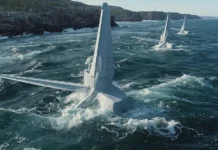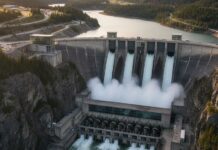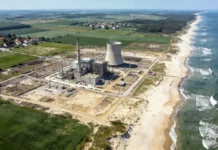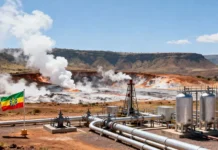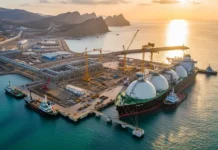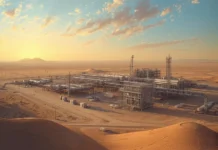Carbon offsets are credits purchased by individuals or businesses to support various projects that help remove carbon dioxide (CO2) and other harmful greenhouse gases, like nitrous oxide and methane, from the environment. It’s an effective way to handle climatic issues and promote renewable energy development.
Individuals and companies participating in industrial activities that emit harmful gases into the environment purchase these credits to reduce their carbon footprint. Purchasing carbon offsets shows you’ve reduced your emissions and care for the environment.
Here’s a well-detailed guide if you want to buy carbon offsets:
-
Do Your Research
The first thing you need to do is research. You must first understand what carbon offsets are and how they work. You need to know whether or not you’re making a difference with every purchase. You don’t want to spend thousands buying a single offset only to find out it wasn’t valuable.
Your money is directed to a project that reduces emissions whenever you purchase carbon offsets. There are projects directed toward improving the environment, and you must understand them before selecting one. You can check their viability, who runs them, objectives, and future projects.
Here are four carbon offset projects your money is likely to go to:
- Renewable Energy: If you choose this as your offset project, your contribution is directed toward building and maintaining wind, hydro, and solar sites worldwide. You’re decreasing the overreliance on fossil fuels by boosting renewable energy quantity on the grid.
- Forestry projects: These are geared towards conserving the environment by planting more trees. The credits generated from such projects depend on the carbon not emitted by protected trees and the carbon re-used by new trees. These not only prevent the release of too much carbon into the air, but also help sustain wildlife and social heritage.
- Waste-to-energy projects: These involve wastes (human and agricultural) and collecting landfill gas. Waste-to-energy focuses on converting methane into electricity.
- Community projects: These projects play a huge part in introducing technology and energy-efficiency methods to less-fortunate communities around the globe. This boosts independence and empowerment, improving communities’ living standards.
These are the projects you could support with your carbon offsets. Choose your project wisely to ensure you bring more good to the world.
-
Choose Your Provider Wisely

Selecting a good offset provider is also crucial. They determine the type of projects you choose and the prices you pay. You can request referrals from individuals or organizations already purchasing offsets or search for them online.
Analyze their websites and understand their driving force. Some may be there just for the money and not to promote a carbon-free future, taking up more than they send to the projects, and you don’t want to help satisfy their greed.
Compare the prices of the different providers and settle on the one offering reasonable prices.
You can purchase your credits from:
- Developers: One of the best ways to purchase your credits is from the direct developers of the projects. They allow you to invest in these projects’ development in return for carbon credits, or buy an Emission Reduction Purchase Agreement (ERPA), a bidding contract between two parties buying and selling carbon credits.
- Brokers: Organizations work with brokers to help them sell carbon credits. You can get in touch with a broker and give specifications on the project you want. They’ll then purchase the project from the developers and resell them at a higher price.
- Climate Trade Marketplace: You can also purchase your carbon offsets on the climate trade marketplace. They combine and offer you the benefits of buying directly from developers and brokers, meaning you get the credits at friendly prices, and they do all the bidding for you.
Besides these options, you can also get credits through your airline’s sustainability programs. You can check if your airline has such programs and purchase from them instead.
-
Ensure Your Offsets Are Retired After The Purchase
Another essential factor to consider when purchasing carbon offsets is if they’ll be retired. Note that you can only claim their benefits once they’re withdrawn. Retiring an offset ensures it’s taken out of circulation, and this process helps avoid double accounting. This way, the credit is only bought once.
The offset goes through a lifecycle that involves some steps. It’d be best to understand the stages before retirement. They are:
- First Stage: The first stage involves developing a carbon offset project. Being the initial stage, you can consult with a scientist on the verification of plans and submit a project description document to the registry.
- Second stage: The registry analyzes the project to ensure it passes criteria, such as adding value and contributing towards carbon footprint reduction. They then give the go-ahead to implement the project.
- Third Stage: This stage involves the developer launching the project, and a third party is usually sent to verify the project’s legitimacy.
- Fourth Stage: After a year since the launch, the registry issues carbon offset representing a tone of carbon prevented from being emitted. Once given, the credits have unique serial numbers to track in a public database.
- Fifth Stage: The final stage involves retiring the offset once a client claims it against their carbon footprint.
For smaller-scale transactions, the offset retirement process is easy. The retailers automatically retire them immediately after purchase. However, larger carbon offsets take more time for the retirement process to be completed.
-
Evaluate The Benefits Of The Offset
The goal of purchasing carbon offset is to lower your carbon footprint.
Carbon emissions vary among companies. For instance, a manufacturing company’s emissions are higher than a software company’s. Thus, if you run a software company, you can argue that your footprint is already tiny.
Before making the purchase, you’d have to consider the benefits first. For instance, your purchase can be geared towards limiting global warming. Therefore, your contribution will help plant more trees or neutralize emissions yet to be eliminated in the ecosystem.
To this end, you’ll need to find some projects you can contribute to offset the footprint. Some of these projects have been highlighted earlier on in the article. Evaluating the benefits of the offset can help you decide on the right purchase for your company.
Conclusion
Learning the ins and outs helps you understand how to purchase carbon offsets, as well as help you make a better and more informed decision on your contribution to reducing your company’s carbon footprint. Collaborate with professionals, and you’ll find it easy to maneuver the process, hence, accomplishing your mission.











